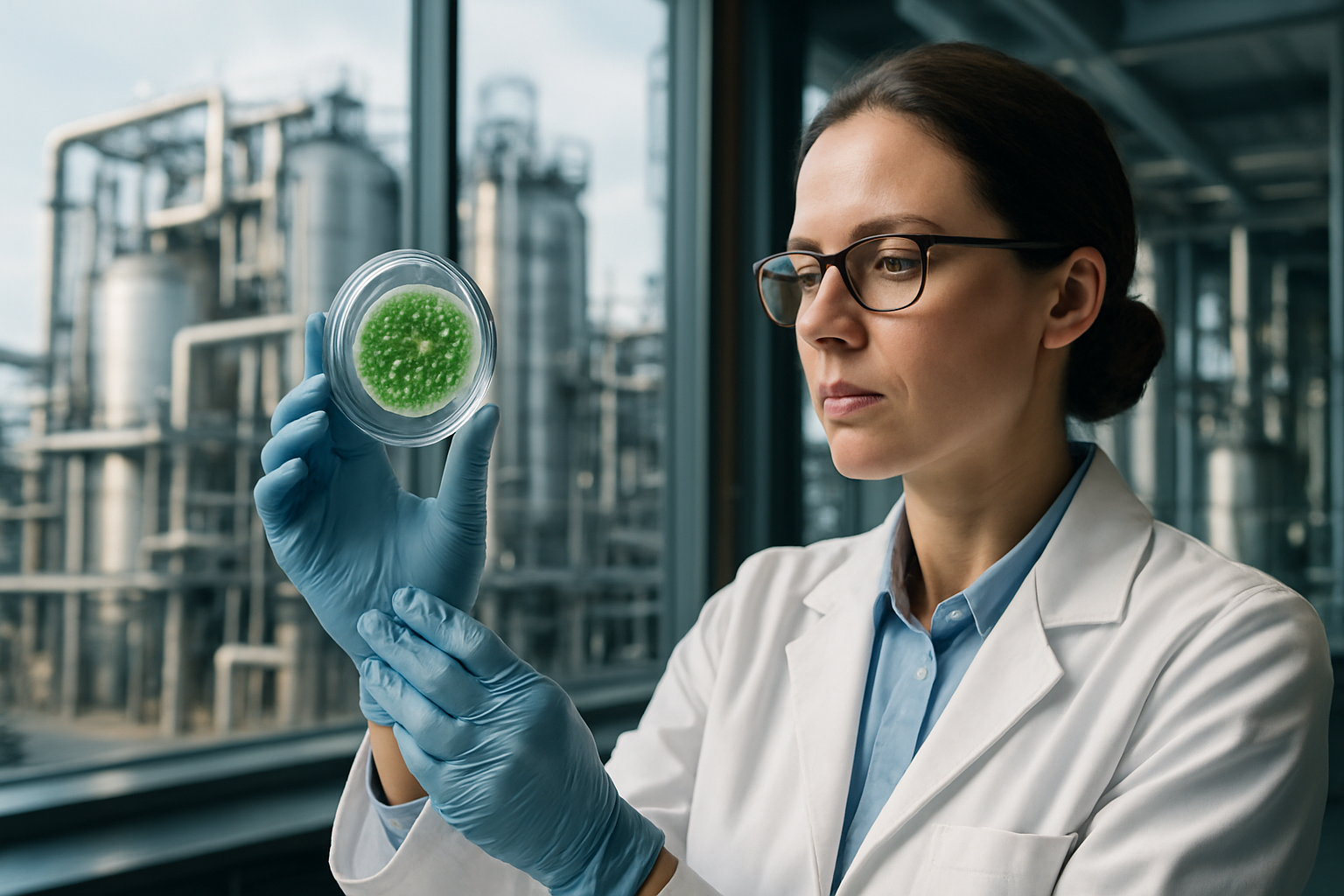Biofabrication: Reshaping Industrial Production
Biofabrication, a cutting-edge fusion of biology and manufacturing, is poised to revolutionize industrial production. This innovative approach harnesses living organisms and biological processes to create materials, products, and even entire structures. As industries seek sustainable alternatives to traditional manufacturing methods, biofabrication emerges as a promising solution that could redefine how we produce goods and materials.

Origins and Evolution of Biofabrication
Biofabrication traces its roots to the intersection of tissue engineering, materials science, and additive manufacturing. Initially developed for biomedical applications, such as creating artificial tissues and organs, the principles of biofabrication have since expanded to encompass a wide range of industrial applications. The field has evolved rapidly over the past two decades, driven by advancements in biotechnology, 3D printing, and materials science.
Early experiments in biofabrication focused on creating simple structures using cell-laden hydrogels. As techniques improved, researchers began exploring more complex applications, such as creating biomaterials for tissue regeneration and developing bioreactors for sustainable chemical production. The convergence of these technologies with industrial manufacturing processes has opened up new possibilities for creating sustainable, biodegradable, and high-performance materials.
Key Principles and Techniques
At its core, biofabrication relies on harnessing biological processes to create materials and products. This can involve using living cells, microorganisms, or biomolecules as building blocks or catalysts in the manufacturing process. Several key techniques have emerged as foundational to biofabrication:
-
Bioprinting: This technique involves using 3D printing technology to deposit layers of living cells, biomaterials, and growth factors to create complex tissue-like structures.
-
Biomaterials synthesis: Leveraging biological processes to create new materials with unique properties, such as spider silk-inspired fibers or bacterial cellulose.
-
Enzymatic processing: Using enzymes to catalyze specific chemical reactions, enabling more efficient and environmentally friendly production processes.
-
Microbial fermentation: Harnessing microorganisms to produce chemicals, materials, or even food products through controlled fermentation processes.
-
Bioreactor design: Creating specialized environments that support and optimize biological processes for industrial-scale production.
Industrial Applications and Market Potential
The applications of biofabrication span a wide range of industries, offering innovative solutions to long-standing challenges. In the textile industry, companies are exploring biofabricated materials as alternatives to traditional fabrics, creating sustainable and biodegradable options. The food industry is leveraging biofabrication to develop plant-based meat alternatives and cultured meat products, addressing concerns about the environmental impact of conventional livestock farming.
In the construction sector, researchers are exploring the use of biofabricated materials for creating more sustainable building materials and even entire structures. The potential for creating self-healing concrete using bacteria or developing biodegradable insulation materials showcases the transformative potential of biofabrication in this industry.
The market potential for biofabricated products is substantial and growing rapidly. According to recent market research, the global biofabrication market is expected to reach $3.7 billion by 2027, growing at a CAGR of 7.2% from 2020 to 2027. This growth is driven by increasing demand for sustainable production methods, advancements in biotechnology, and the expanding applications of biofabricated materials across various industries.
Challenges and Future Directions
While biofabrication holds immense promise, several challenges must be addressed to realize its full potential in industrial production. Scaling up biofabrication processes from laboratory to industrial scale remains a significant hurdle, requiring advancements in bioreactor design and process optimization. Additionally, ensuring consistent quality and performance of biofabricated materials across large production runs presents technical challenges that need to be overcome.
Regulatory frameworks and standards for biofabricated products are still evolving, creating uncertainty for businesses looking to commercialize these innovations. As the field advances, establishing clear guidelines and safety standards will be crucial for widespread adoption and consumer acceptance.
Looking to the future, several trends are likely to shape the evolution of biofabrication in industrial production:
-
Integration with artificial intelligence and machine learning to optimize biofabrication processes and design novel biomaterials.
-
Development of more sophisticated bioreactors capable of supporting complex biological processes at industrial scales.
-
Expansion into new industries, such as aerospace and electronics, leveraging the unique properties of biofabricated materials.
-
Increased focus on circular economy principles, designing biofabrication processes that minimize waste and enable easy recycling or biodegradation of products.
Practical Insights for Businesses
-
Conduct a thorough assessment of your production processes to identify areas where biofabrication could offer sustainable alternatives or enhance product performance.
-
Invest in research and development partnerships with academic institutions or biotechnology firms to stay at the forefront of biofabrication innovations.
-
Consider the entire lifecycle of biofabricated products, from raw material sourcing to end-of-life disposal, to maximize sustainability benefits.
-
Develop a clear communication strategy to educate consumers about the benefits and safety of biofabricated products, addressing potential concerns proactively.
-
Explore collaborative opportunities within your industry to share knowledge and resources, accelerating the adoption of biofabrication technologies.
As biofabrication continues to evolve, it presents a compelling vision for the future of industrial production. By harnessing the power of biology, businesses can create more sustainable, efficient, and innovative products that meet the growing demand for environmentally responsible solutions. While challenges remain, the potential of biofabrication to revolutionize manufacturing processes across multiple industries is undeniable. As we move forward, embracing this technology could be key to achieving a more sustainable and circular industrial economy.





